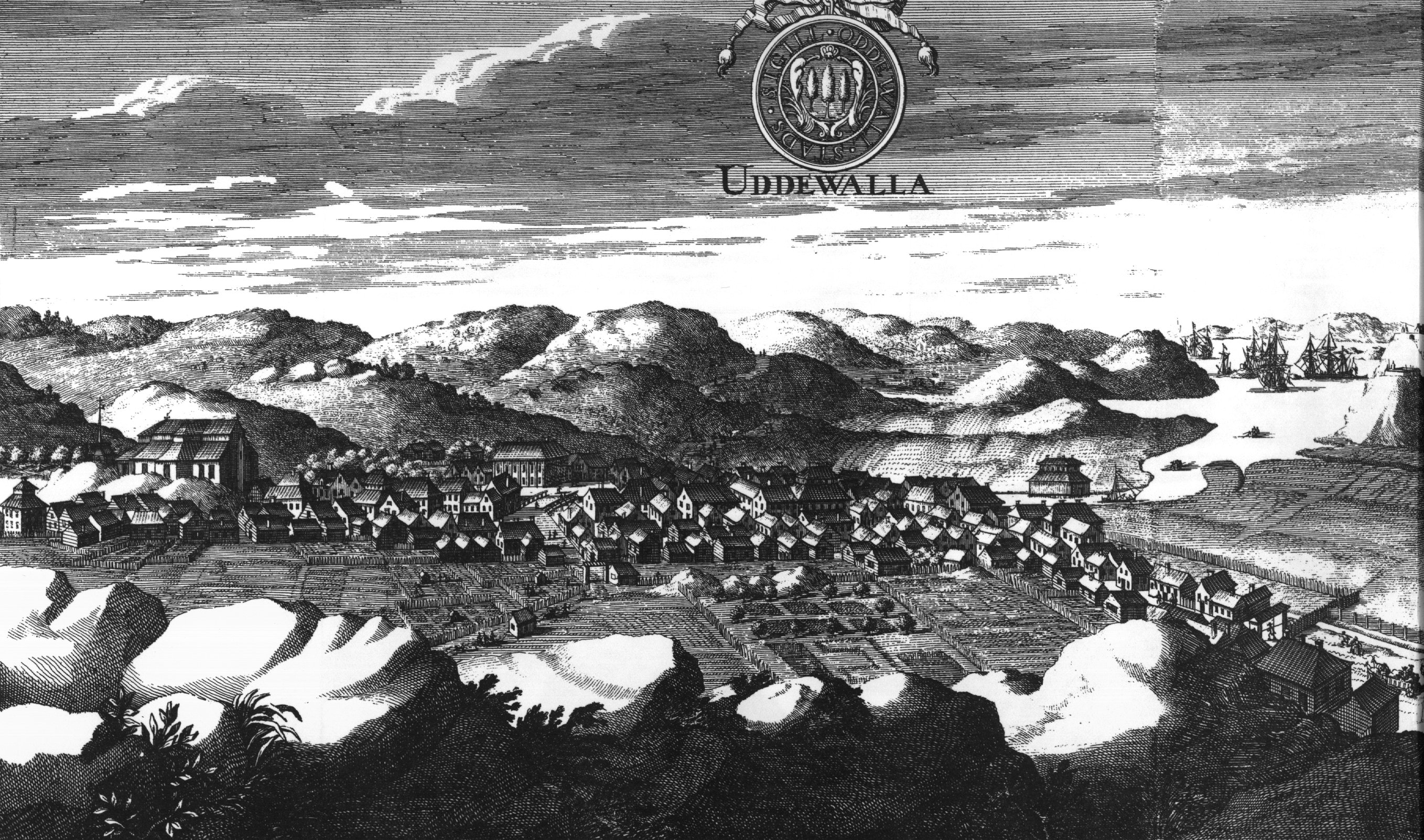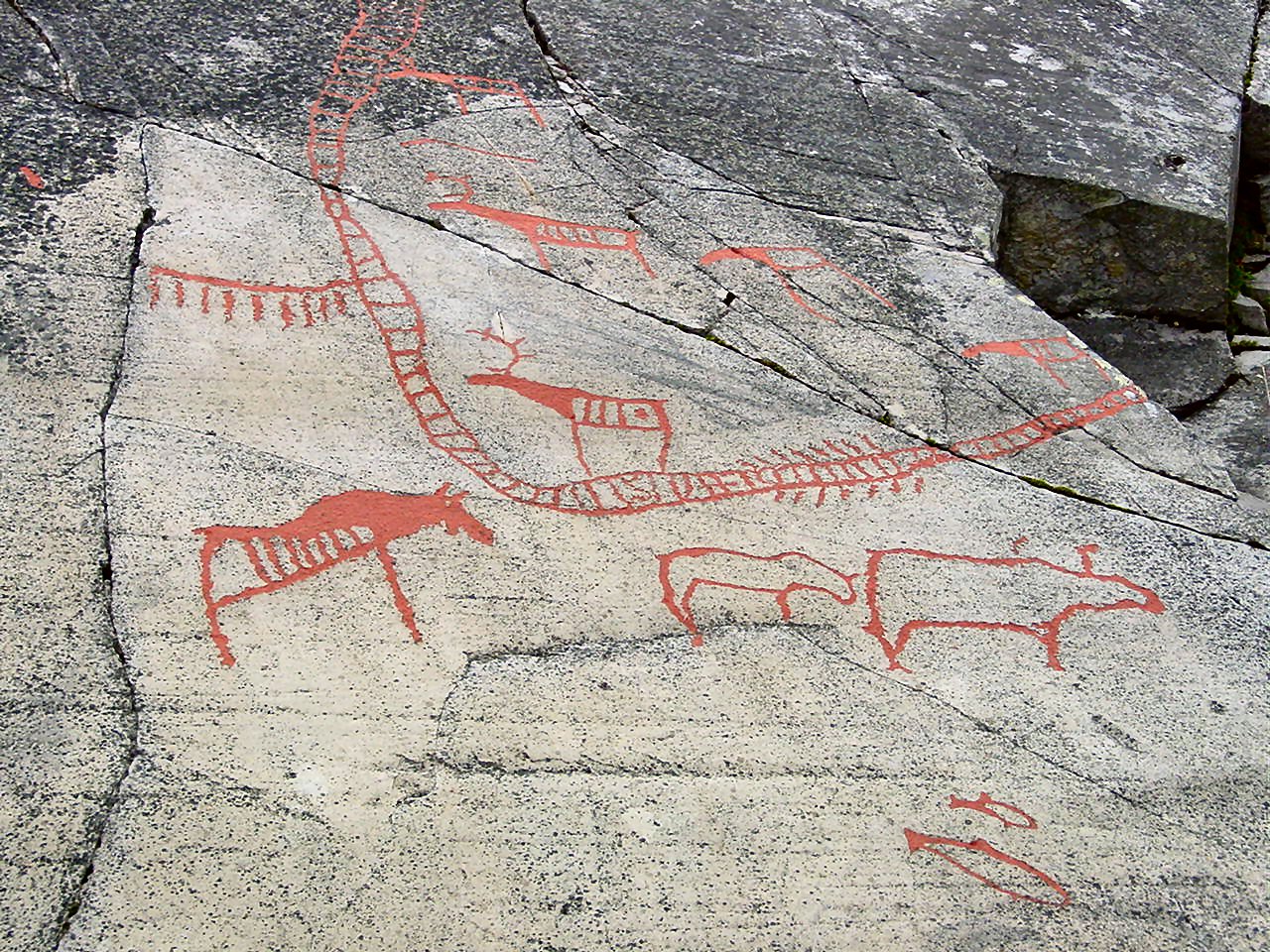|
Dragsmark Abbey
Dragsmark Abbey ( sv, Dragsmarks kloster) was a Premonstratensian canonry in Båhuslen, formerly Norway, now Bohuslän, Sweden. History The monastery at Dragsmark, also known as "Marieskog" in Norwegian language, Norwegian, was founded some time before 1260,possibly in 1234 with the support of King Håkon Håkonsson, and was dedicated to the Blessed Virgin Mary. The abbey was very wealthy in its heyday and ran a prestigious school, but declined during the 15th century, and as early as 1519 was in the control of a lay administrator, the first monastery in Norway to be secularised. With the Protestant Reformation, Reformation the Crown granted it to a tenant in 1532, with a condition that the remaining canons had to be maintained. The buildings fell into disrepair, and in 1610 were used as a quarry for stone for the construction of Båhus Fortress. Site The monastery ruins are on the west of Bokenäset on the fjord between Uddevalla and the sea, north of the island of Orust. In ... [...More Info...] [...Related Items...] OR: [Wikipedia] [Google] [Baidu] |
Premonstratensians
The Order of Canons Regular of Prémontré (), also known as the Premonstratensians, the Norbertines and, in Britain and Ireland, as the White Canons (from the colour of their habit), is a religious order of canons regular of the Catholic Church founded in Prémontré near Laon in 1120 by Norbert of Xanten, who later became Archbishop of Magdeburg. Premonstratensians are designated by ''OPraem'' (''Ordo Praemonstratensis'') following their name. Norbert was a friend of Bernard of Clairvaux and was largely influenced by the Cistercian ideals as to both the manner of life and the government of his order. As the Premonstratensians are not monks but canons regular, their work often involves preaching and the exercising of pastoral ministry; they frequently serve in parishes close to their abbeys or priories. History The order was founded in 1120. Saint Norbert had made various efforts to introduce a strict form of canonical life in various communities of canons in Germany; in 1120 h ... [...More Info...] [...Related Items...] OR: [Wikipedia] [Google] [Baidu] |
Uddevalla
Uddevalla (old no, Oddevold) is a town and the seat of Uddevalla Municipality in Västra Götaland County, Sweden. In 2015, it had a population of 34 781. It is located at a bay of the south-eastern part of Skagerrak. The beaches of Uddevalla are filled with seashells and Uddevalla has one of the largest shell-banks in the world. Uddevalla has a port and it once had a large shipyard, the ''Uddevallavarvet'' ("Uddevalla wharf"), which was the largest employer in Bohuslän during the 1960s. The 1970s recession, that affected the Swedish shipyard industry severely, led to the closing of the wharf in 1985. History Uddevalla received its town privileges in 1498, but thought to have been a place of trade long before that. Formerly, Uddevalla belonged to Norway, and its name today comes from the original Norwegian ''Oddevald'', which later turned into ''Oddevold''. Due to its close location to Sweden and Denmark, it was often besieged. In 1612, it was burnt down by Swedish troops led ... [...More Info...] [...Related Items...] OR: [Wikipedia] [Google] [Baidu] |
Medieval Norway
The history of Norway has been influenced to an extraordinary degree by the terrain and the climate of the region. About 10,000 BC, following the retreat inland of the great ice sheets, the earliest inhabitants migrated north into the territory which is now Norway. They traveled steadily northwards along the coastal areas, warmed by the Gulf Stream. They were hunter-gatherers whose diet included seafood and game, particularly reindeer as staple foods. Between 5,000 BC and 4,000 BC the earliest agricultural settlements appeared around the Oslofjord. Gradually, between 1500 BC and 500 BC, agricultural settlements spread to the entire south Norway, while the inhabitants of the regions north of Trøndelag continued to hunt and fish. The Neolithic period started in 4000 BC. The Migration Period caused the first chieftains to take control and hilltop forts to be constructed. From the 8th century Norwegians started expanding across the seas to the British Isles and later Iceland and G ... [...More Info...] [...Related Items...] OR: [Wikipedia] [Google] [Baidu] |
Christian Monasteries Established In The 13th Century
Christians () are people who follow or adhere to Christianity, a monotheistic Abrahamic religion based on the life and teachings of Jesus Christ. The words ''Christ'' and ''Christian'' derive from the Koine Greek title ''Christós'' (Χριστός), a translation of the Biblical Hebrew term ''mashiach'' (מָשִׁיחַ) (usually rendered as ''messiah'' in English). While there are diverse interpretations of Christianity which sometimes conflict, they are united in believing that Jesus has a unique significance. The term ''Christian'' used as an adjective is descriptive of anything associated with Christianity or Christian churches, or in a proverbial sense "all that is noble, and good, and Christ-like." It does not have a meaning of 'of Christ' or 'related or pertaining to Christ'. According to a 2011 Pew Research Center survey, there were 2.2 billion Christians around the world in 2010, up from about 600 million in 1910. Today, about 37% of all Christians live in the Am ... [...More Info...] [...Related Items...] OR: [Wikipedia] [Google] [Baidu] |
Ruins In Sweden
Ruins () are the remains of a civilization's architecture. The term refers to formerly intact structures that have fallen into a state of partial or total disrepair over time due to a variety of factors, such as lack of maintenance, deliberate destruction by humans, or uncontrollable destruction by natural phenomena. The most common root causes that yield ruins in their wake are natural disasters, armed conflict, and population decline, with many structures becoming progressively derelict over time due to long-term weathering and scavenging. There are famous ruins all over the world, with notable sites originating from ancient China, the Indus Valley and other regions of ancient India, ancient Iran, ancient Israel and Judea, ancient Iraq, ancient Greece, ancient Egypt, Roman sites throughout the Mediterranean Basin, and Incan and Mayan sites in the Americas. Ruins are of great importance to historians, archaeologists and anthropologists, whether they were once individual forti ... [...More Info...] [...Related Items...] OR: [Wikipedia] [Google] [Baidu] |
Monasteries In Bohuslän
A monastery is a building or complex of buildings comprising the domestic quarters and workplaces of monastics, monks or nuns, whether living in communities or alone (hermits). A monastery generally includes a place reserved for prayer which may be a chapel, church, or temple, and may also serve as an oratory, or in the case of communities anything from a single building housing only one senior and two or three junior monks or nuns, to vast complexes and estates housing tens or hundreds. A monastery complex typically comprises a number of buildings which include a church, dormitory, cloister, refectory, library, balneary and infirmary, and outlying granges. Depending on the location, the monastic order and the occupation of its inhabitants, the complex may also include a wide range of buildings that facilitate self-sufficiency and service to the community. These may include a hospice, a school, and a range of agricultural and manufacturing buildings such as a barn, a forge, o ... [...More Info...] [...Related Items...] OR: [Wikipedia] [Google] [Baidu] |
Premonstratensian Monasteries In Sweden
The Order of Canons Regular of Prémontré (), also known as the Premonstratensians, the Norbertines and, in Britain and Ireland, as the White Canons (from the colour of their habit), is a religious order of canons regular of the Catholic Church founded in Prémontré near Laon in 1120 by Norbert of Xanten, who later became Archbishop of Magdeburg. Premonstratensians are designated by ''OPraem'' (''Ordo Praemonstratensis'') following their name. Norbert was a friend of Bernard of Clairvaux and was largely influenced by the Cistercian ideals as to both the manner of life and the government of his order. As the Premonstratensians are not monks but canons regular, their work often involves preaching and the exercising of pastoral ministry; they frequently serve in parishes close to their abbeys or priories. History The order was founded in 1120. Saint Norbert had made various efforts to introduce a strict form of canonical life in various communities of canons in Germany; in 1120 he ... [...More Info...] [...Related Items...] OR: [Wikipedia] [Google] [Baidu] |





